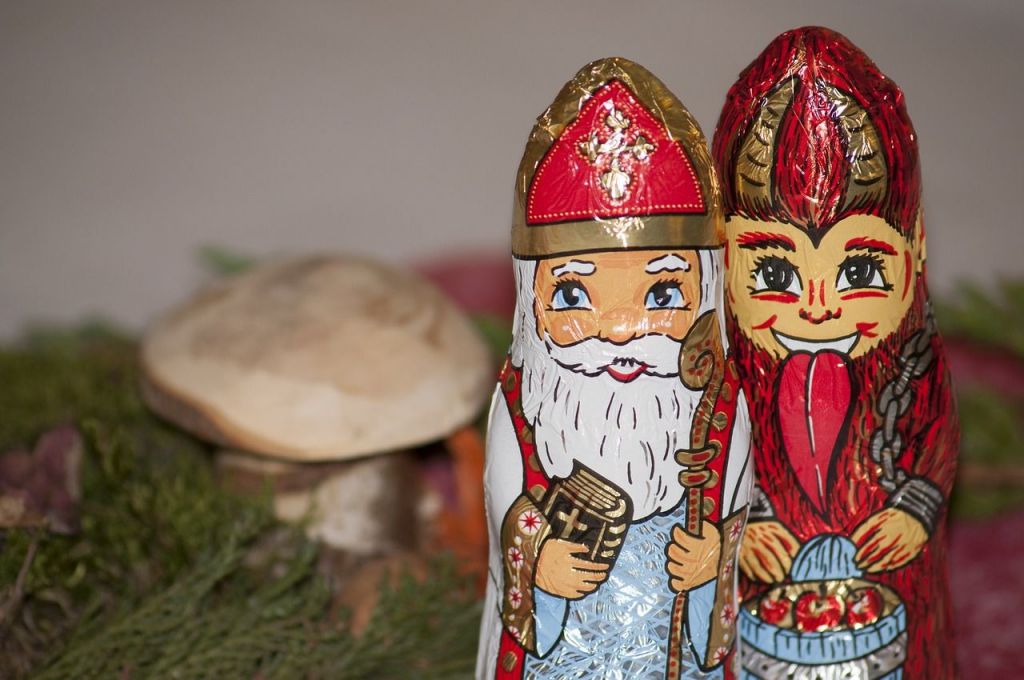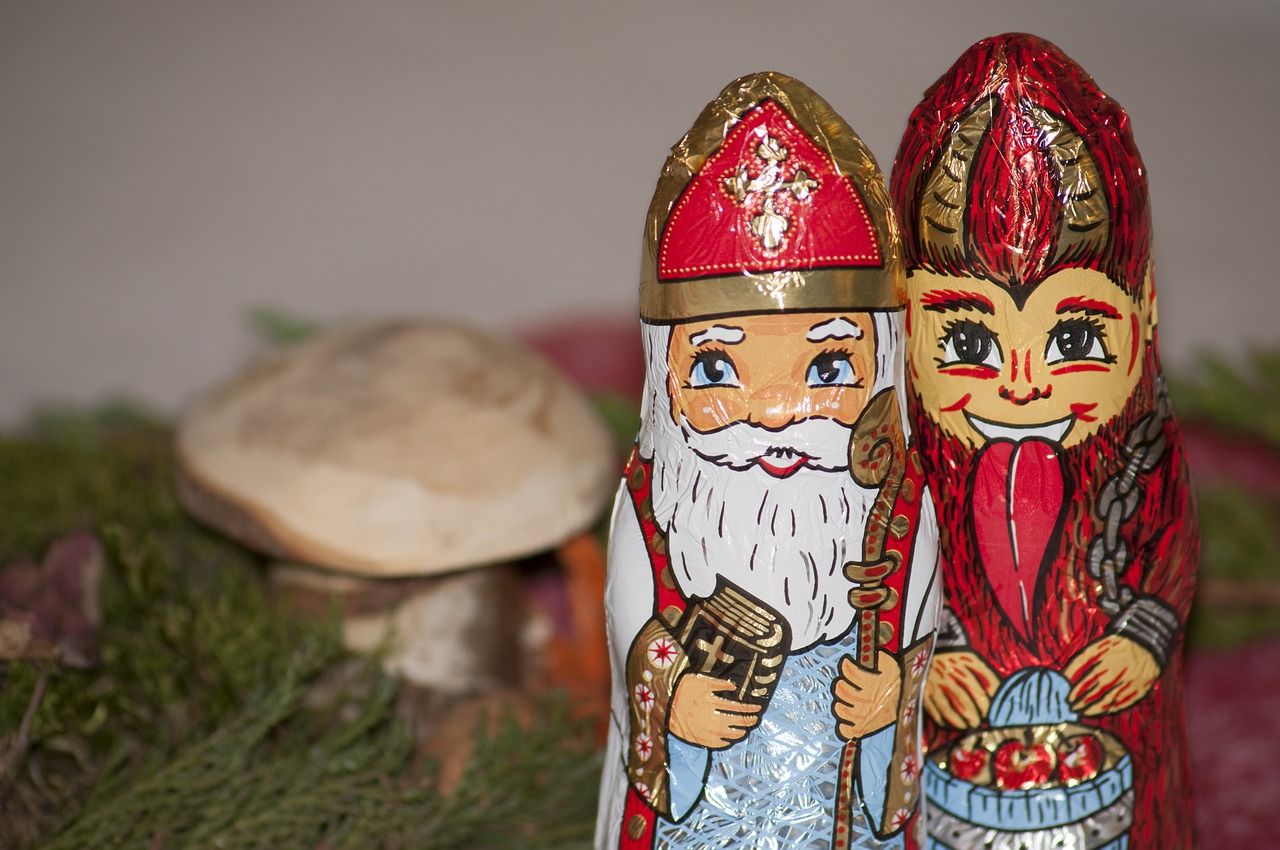
Austria: Krampus
Children in the United States and many other countries look forward to the coming of Santa Claus with gifts and toys, but in Austria and some other countries in Eastern Europe, the main character is much more frightening. This creature looks like half a demon and half a goat, and its purpose is to punish misbehaving children. It is unclear where this figure originated, but it is thought to be a very old bit of folklore.
Iceland: Yule Cat
In the US, many children are less than enthusiastic about receiving clothing as gifts at Christmastime. However, in Iceland, the tradition of receiving clothing before Christmas is based on a terrifying myth about the Yule Cat (Jólakötturinn), which prowls about on Christmas to eat those who have not gotten clothing. Parents use the Yule Cat to reinforce good behavior and prevent bad behavior, according to tradition, by rewarding those who do right with clothing and telling poorly behaved children they must face the Yule Cat. At the same time, children are taught that giving clothing to those who cannot afford to get it themselves can also protect them from the Yule Cat, so this also encourages generosity.
Italy: Befana
An ugly old woman who is dressed in rags and flies a broom, called Befana, is the Italian version of the gift-giver of the season. She enters through chimneys or keyholes and fills socks hung near the fireplace with treats and presents – or black “coal” (sugar) and garlic and onions if the children have been badly behaved. Instead of leaving out milk and cookies, they leave out wine and cakes. The name is based on the word “Epiphany” which is traditionally January 6, representing the visit of the Magi. The story says that when the Magi were searching for the Christ child, they were asked by a woman who was sweeping where they were going. They told her about the star and the baby and invited her to join them, only to be refused. She later realized that baby was the long-awaited Redeemer and regretted her decision, resulting in her wandering about looking for the Christ child and on the day of the Epiphany, she rewards good children and disappoints the bad.
Japan: KFC
Many times a traditional meal is part of a holiday and Christmas is no exception to that! For most Americans, that meal consists of turkey, ham, or both, plus a dizzying array of side dishes and desserts. However, in Japan, the traditional meal is Kentucky Fried Chicken, and has been since the 1970s, when Japan’s KFC promoted a special campaign called “Kentucky for Christmas.” KFC offers family dinners during the season to aid families in celebrating together.
New Zealand: Pohutukawa Tree
While the western world uses pine and spruce trees for Christmas trees, on the other side of the world, New Zealand’s traditional tree is called the Pohutukawa (Metrosideros excelsa) and it blooms with bright red flowers during the Christmas season. They are used for decoration inside, similar to holly in the US, and brighten up the landscape outdoors, as well!
Spain: Tió De Nadal
The English translation of this term is “Christmas Log,” and the tradition involves getting a log, about a foot long, and adding a smiling face and a nose – often a 3D nose. Some add two or four legs of sticks to support it. Originally, it was just a log, but adding the pleasant trappings made it more fun for the children to “feed” the log and keep it warm with a blanket. Early on, the children were told to go somewhere else in the house and pray for Tió to deliver a lot of presents, but that has been mostly replaced with having the children warm their stick by a fire – a stick which they will use to beat the log to make it pop out presents. Parents use the time while the children are out of the room to put small presents under the blanket, to make it appear they came from the log. These may be nuts or candy or small toys. Some people refer to the log as “Caga Tió” or “poo log” because of the way it appears to leave the presents.
Ukraine: Spiderwebs
Decorating evergreen trees is one of the common traditions around the world, but the type of decorations may be different. In the US, most people decorate with baubles and lights, some of which may have sentimental value. In Ukraine, however, the tradition is different. The trees there are usually decorated with spider web ornaments, to commemorate a story from their folklore, known as the Legend of the Christmas Spider. The story tells about a woman who was very poor and she and her children were struggling. A tree began to grow in their house. On Christmas Eve, spiders covered it in webs, making it pretty even though they could not afford decorations. Some iterations of the story say that upon arising in the morning, the mother and children found that the webs had become gold and silver.
USA: Christmas Pickle
A decorated tree is a part of many celebrations. Most use ornaments made of glass or plastic, either round or shaped like holiday symbols or characters. However, in some places, one ornament that is almost always included on the tree is a pickle! Known as a German tradition, most Germans actually are unaware of this tradition, as of 2016. This actually is done most often in the United States. A glass pickle is hidden somewhere deep in the tree, and whoever finds it first either gets a special present or is considered to have good luck for the coming year.

